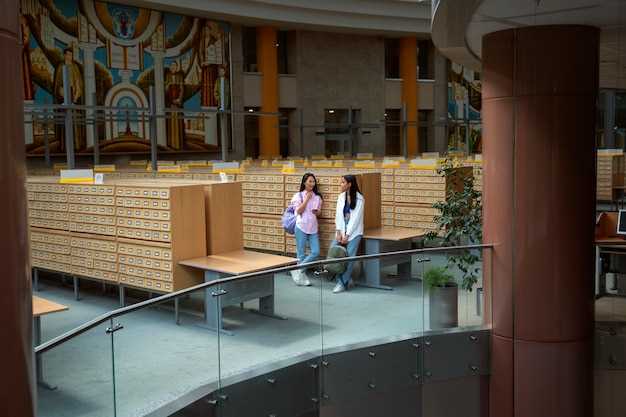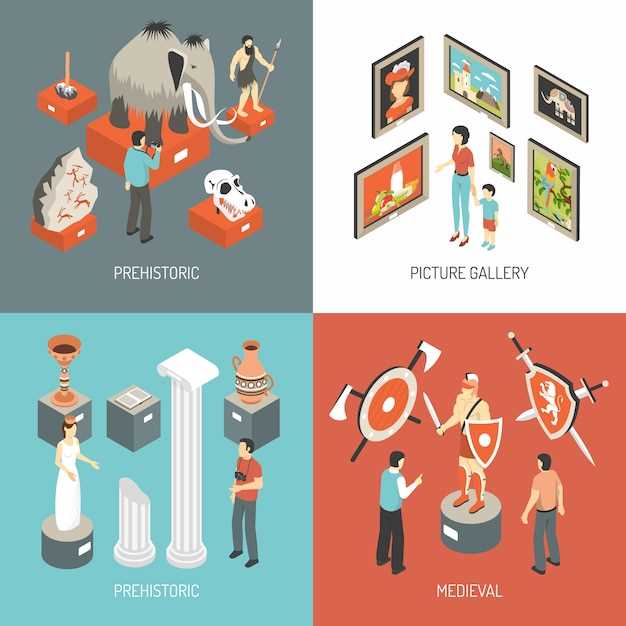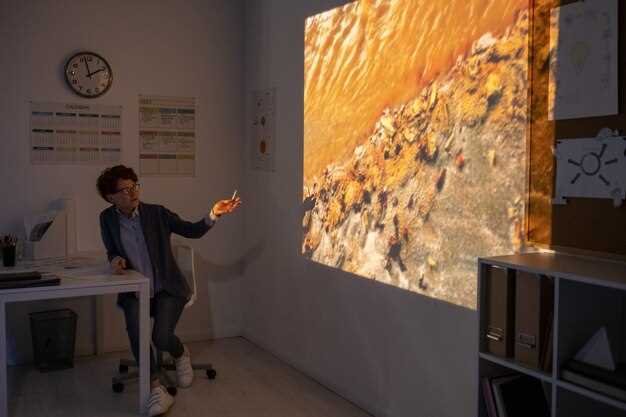
In the ever-evolving world of art, where creativity knows no bounds, a new wave of sustainable practices is emerging within galleries and museums. As custodians of cultural heritage, these institutions are increasingly embracing eco-friendly approaches to preserve and protect art for future generations. By adopting innovative strategies and rethinking traditional methods, they are not only safeguarding the artistic treasures but also contributing to a greener and more sustainable future.
Within this realm, a harmonious blend of art and environmental consciousness is taking shape. The art world, known for its ability to challenge norms and provoke thought, is now turning its attention to sustainability. Through the use of alternative materials, energy-efficient technologies, and mindful exhibition practices, galleries and museums are redefining the way art is preserved and presented.
One of the key driving forces behind this green revolution is the recognition of the impact of traditional preservation methods on the environment. The art industry has long relied on chemicals, high-energy consumption, and excessive waste generation. However, with the growing awareness of climate change and the need for sustainable practices, the art world is shifting towards a more eco-conscious approach.
By incorporating sustainable materials and techniques, art institutions are not only reducing their carbon footprint but also setting an example for other industries. From utilizing recycled and repurposed materials for exhibition displays to implementing energy-efficient lighting systems, these institutions are proving that art can thrive while being mindful of the planet.
Incorporating Renewable Energy Sources for Powering Art Spaces
Embracing sustainable energy solutions is crucial for the long-term viability and environmental responsibility of art spaces. By incorporating renewable energy sources, such as solar and wind power, galleries and museums can reduce their carbon footprint and contribute to a greener future.
One of the key advantages of utilizing renewable energy sources is their ability to provide a consistent and reliable power supply. Solar panels, for example, can harness the abundant energy from the sun and convert it into electricity, ensuring a sustainable and uninterrupted power source for art spaces. Similarly, wind turbines can harness the power of the wind to generate electricity, offering another viable option for powering galleries and museums.
By integrating renewable energy sources into the infrastructure of art spaces, these institutions can not only reduce their reliance on fossil fuels but also showcase their commitment to sustainability. The incorporation of solar panels or wind turbines can serve as a visual reminder of the gallery or museum’s dedication to environmental stewardship, inspiring visitors and artists alike.
Furthermore, the adoption of renewable energy sources can have significant financial benefits for art spaces. While the initial investment may be higher compared to traditional energy sources, the long-term savings on energy bills can be substantial. Additionally, governments and organizations often provide incentives and grants for the installation of renewable energy systems, further offsetting the costs and making it an economically viable choice.
It is important to note that incorporating renewable energy sources for powering art spaces is not limited to large institutions. Even smaller galleries and museums can take steps towards sustainability by installing solar panels on their rooftops or utilizing wind turbines in their vicinity. Every effort counts in the transition towards a greener and more sustainable art world.
In conclusion, embracing renewable energy sources is a crucial step for art spaces to adopt a green approach and contribute to the preservation of art. By harnessing the power of the sun and wind, galleries and museums can reduce their environmental impact, inspire others, and create a more sustainable future for the art community.
Implementing Eco-Friendly Lighting Solutions to Reduce Energy Consumption

In the pursuit of sustainable practices within the realm of art preservation, it is crucial to explore innovative approaches to reduce energy consumption. One area that holds immense potential for improvement is the implementation of eco-friendly lighting solutions. By adopting environmentally conscious lighting systems, art galleries and museums can significantly decrease their energy usage while still maintaining optimal conditions for showcasing and preserving artwork.
Enhancing Efficiency with LED Lighting
One effective strategy for reducing energy consumption in art galleries and museums is the adoption of LED lighting technology. LED lights offer numerous advantages over traditional incandescent or fluorescent bulbs. They consume significantly less energy, have a longer lifespan, and emit less heat, reducing the strain on cooling systems. Additionally, LED lights can be easily dimmed or adjusted, allowing for greater control over the lighting conditions and minimizing unnecessary energy usage.
The Importance of Natural Light Integration
Integrating natural light into gallery spaces can also contribute to energy reduction efforts. By strategically placing windows or skylights, galleries can harness natural daylight to illuminate artworks during daytime hours. This not only reduces the reliance on artificial lighting but also enhances the visual experience for visitors, as natural light brings out the true colors and textures of the artwork. However, it is crucial to consider the potential risks of UV radiation and implement appropriate measures to protect delicate artworks from harmful exposure.
Implementing eco-friendly lighting solutions is a crucial step towards achieving sustainability in art galleries and museums. By embracing LED technology and integrating natural light, these institutions can significantly reduce their energy consumption while still providing an optimal environment for preserving and showcasing art. Such initiatives not only contribute to the preservation of our cultural heritage but also serve as a model for other industries to adopt sustainable practices.
Adopting Sustainable Materials for Art Installations and Exhibitions
Incorporating eco-friendly materials into art installations and exhibitions is a crucial aspect of promoting sustainability in the art world. By embracing sustainable practices, art institutions can contribute to the preservation of our environment while showcasing innovative and thought-provoking artworks.
When it comes to selecting materials for art installations and exhibitions, it is essential to prioritize those that have minimal environmental impact. Instead of relying on conventional materials that may contain harmful chemicals or contribute to waste, artists and curators can explore alternative options that are eco-friendly and sustainable.
One approach is to utilize recycled or upcycled materials, giving new life to discarded objects and reducing the demand for new resources. By repurposing materials, artists can create unique and visually striking installations that convey powerful messages about sustainability and resourcefulness.
Another option is to opt for materials that are sourced from renewable or responsibly managed forests. Using sustainably harvested wood or bamboo, for example, not only reduces the carbon footprint but also supports the conservation of forests and biodiversity. Additionally, natural materials such as clay, natural dyes, and organic fabrics can be used to create artworks that are both aesthetically pleasing and environmentally friendly.
Furthermore, artists and curators can explore the use of non-toxic and water-based paints, adhesives, and varnishes, minimizing the release of harmful chemicals into the environment. By choosing these eco-friendly alternatives, art installations and exhibitions can be enjoyed without compromising the health and well-being of visitors, staff, and the surrounding ecosystem.
Embracing sustainable materials for art installations and exhibitions not only aligns with the principles of environmental responsibility but also encourages artists and viewers to reflect on the interconnectedness of art and nature. By adopting a green approach, art institutions can lead by example and inspire others to incorporate sustainability into their creative practices.
Promoting Environmental Awareness through Art Education Programs
Art education programs have the power to inspire and educate individuals about environmental issues through creative expression. By incorporating themes of sustainability, conservation, and the natural world into art curriculum, galleries and museums can play a vital role in promoting environmental awareness among their visitors.
Engaging with Nature

One way art education programs can promote environmental awareness is by encouraging students to engage with nature. Through outdoor sketching sessions or plein air painting workshops, participants can develop a deeper connection with the environment and gain a greater appreciation for its beauty and fragility. By immersing themselves in natural surroundings, students can explore the intricate details of the ecosystem and understand the importance of preserving it.
Recycled Materials and Upcycling
Another approach to promoting environmental awareness is by incorporating the use of recycled materials and upcycling techniques in art projects. By encouraging students to create artwork using discarded materials, galleries and museums can highlight the potential for creativity and beauty in repurposing items that would otherwise end up in landfills. This not only raises awareness about waste reduction but also encourages participants to think critically about their own consumption habits.
- Organizing workshops on creating sculptures from recycled materials
- Providing resources and information on local recycling programs
- Collaborating with local artists who specialize in upcycling
By incorporating these practices into art education programs, galleries and museums can foster a sense of environmental responsibility and inspire individuals to make sustainable choices in their own lives. Through the power of art, they can create a platform for dialogue and action, encouraging visitors to become advocates for the preservation of our planet.
Reducing Waste and Implementing Recycling Initiatives in Art Institutions
In the realm of art institutions, there is a growing recognition of the need to adopt sustainable practices that minimize waste and promote recycling. This section explores the various strategies and initiatives that art galleries and museums can implement to reduce their environmental impact and contribute to a greener future.
1. Waste Reduction Strategies
Art institutions can implement a range of waste reduction strategies to minimize the amount of waste generated within their premises. One approach is to encourage artists and curators to utilize sustainable materials and techniques in their artworks, such as using recycled or repurposed materials. Additionally, galleries and museums can promote the concept of minimalism, focusing on quality rather than quantity, and avoiding excessive packaging or unnecessary materials in exhibitions.
Another effective strategy is to implement a comprehensive waste management system that includes proper sorting and disposal of different types of waste, such as paper, plastic, glass, and organic waste. This can be achieved through the installation of clearly labeled recycling bins throughout the institution, along with educational signage to guide visitors and staff on proper waste disposal practices.
2. Recycling Initiatives
Implementing recycling initiatives is a crucial step towards achieving sustainability in art institutions. This can involve partnering with local recycling facilities or organizations to ensure that recyclable materials are properly collected, processed, and reused. Art galleries and museums can also establish their own recycling programs, where materials such as paper, cardboard, plastic, and glass are collected separately and sent for recycling.
Furthermore, art institutions can explore innovative ways to incorporate recycled materials into their operations. This can include using recycled materials for exhibition displays, signage, and promotional materials. By showcasing the creative potential of recycled materials, galleries and museums can inspire visitors and artists to adopt more sustainable practices in their own artistic endeavors.
In conclusion, reducing waste and implementing recycling initiatives are essential components of a green approach to preserving art in contemporary art galleries and museums. By adopting these practices, art institutions can contribute to a more sustainable future while raising awareness about the importance of environmental stewardship within the art community.
Engaging in Collaborative Partnerships for Sustainable Art Practices
Creating a sustainable future for the art world requires a collective effort and collaboration between various stakeholders. This section explores the importance of engaging in collaborative partnerships to promote and implement sustainable practices in the art industry.
Building Alliances for Sustainable Art
Collaborative partnerships play a crucial role in fostering sustainable art practices. By joining forces with like-minded organizations, artists, collectors, and institutions can collectively work towards reducing their environmental impact and preserving art for future generations. These alliances enable the sharing of knowledge, resources, and expertise, creating a network of support and inspiration.
The Power of Cross-Sector Collaboration
Engaging in collaborative partnerships that span across different sectors, such as art, science, technology, and environmental organizations, can bring diverse perspectives and innovative solutions to the table. By combining the expertise of individuals from various fields, sustainable art practices can be developed and implemented more effectively. This cross-pollination of ideas and skills can lead to groundbreaking initiatives that address both environmental concerns and artistic preservation.
Collaborative partnerships for sustainable art practices are not limited to local or national levels. International collaborations can foster global dialogue and exchange, promoting the adoption of sustainable practices on a larger scale. By working together, art communities worldwide can create a united front in the pursuit of a greener and more sustainable future for art.
Through collaborative partnerships, the art industry can embrace sustainable practices that go beyond mere preservation. By integrating environmental consciousness into every aspect of the art world, from production to exhibition, we can ensure the longevity of art while minimizing its ecological footprint. Together, we can create a thriving and sustainable art ecosystem for generations to come.

